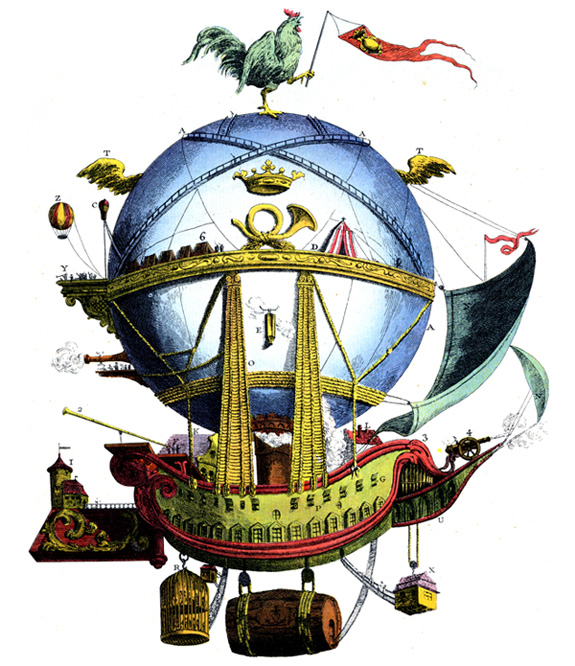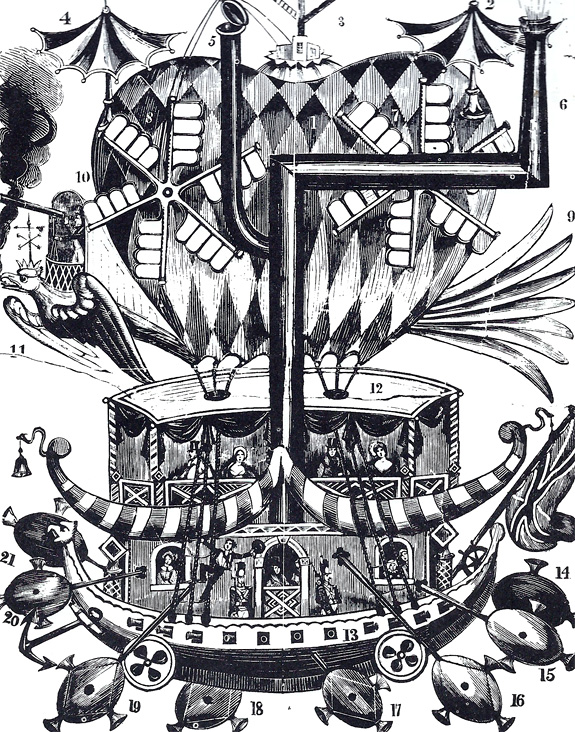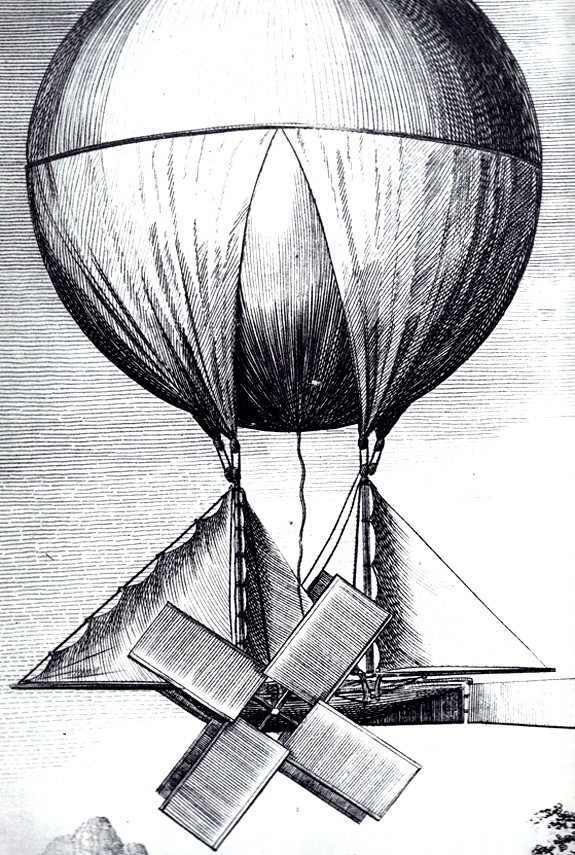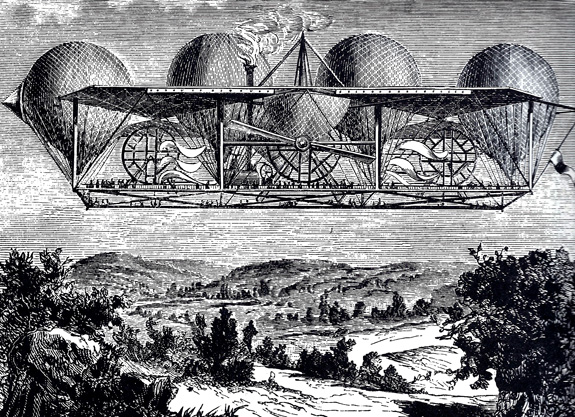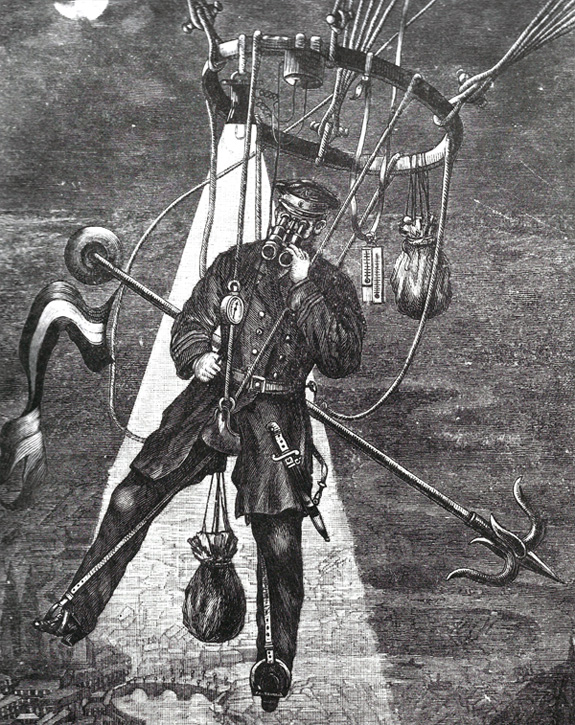Nathan Wailes - Blog - GitHub - LinkedIn - Patreon - Reddit - Stack Overflow - Twitter - YouTube
Others' Predictions of the Future
- 1627 - Francis Bacon - The New Atlantis (book)
- Peter Thiel: "I like the genre of past books written about the future, e.g.: Francis Bacon, The New Atlantis"
- Just as with BF Skinner's "Walden Two", the inhabitants of the utopia share many of the customs of the visitors. In the real world, newly-discovered societies often have shockingly-different ways of doing just about everything. So if you're trying to predict the future and you come up with something that isn't a little shocking to you, you're probably missing something.
- It's interesting to me that he has the Governor(?) explain that 3,000 years ago societies were much more developed than in 1627, and they sent ships around a lot more. It brought to my attention just how hardy technology / civilizations are, because even if a particular disaster ruins a particular civilization, technology spreads so quickly that it's "backed up" many times over all around the world.
- 1800s - Predictions of the future of air travel
- The first and second drawing seem to show a lack of appreciation for one of the main constraints on this new type of invention: the weight brought aloft.
- The third drawing shows people assuming new inventions will look like their analogous ancestors.
- 1900 - "France in the Year 2000"
- The series of paintings, made by Jean-Marc Côté and other French artists in 1899, 1900, 1901 and 1910, shows artist depictions of what life might look like in the year 2000. The first series of images were printed and enclosed in cigarette and cigar boxes around the time of the 1900 World Exhibition in Paris, according to the Public Domain Review, then later turned into postcards.
- Automation of tedious tasks:
- Automobiles:
- Flying machines:
- Living underwater:
- I think the underwater scenes show a consistent error in people's predictions of the future: forgetting to think about the cost of developing a particular invention, and what the existence of that invention would imply about the state of the rest of the world.
- In this case, if living underwater had become economical, that would suggest that living above-water had become expensive enough to make it worth the investment of figuring out how to live underwater.
- The underwater scenes may show another potential error: looking at trends in innovations around you and assuming they will continue at the same rate.
- In this case, if there had been a number of newspaper articles about underwater exploration at that time, people may have assumed that this trend would continue.
- The airship scene seems to show another consistent error in people's predictions of the future: imagining that a new invention which is analogous to an old invention will look like and/or function like that old invention.
- In this case, they're assuming that because aircraft are analogous to sailing ships, that aircraft will look and function like sailing ships, when in reality the entire nature of warfare would change.
- Clothing: The scenes seem to show a lack of appreciation for how clothing would change.
- 1909 - The Great Illusion (book)
- Peter Thiel: "I like the genre of past books written about the future, e.g.: Norman Angell, The Great Illusion"
- 1913.04.22 - President of the American National Bank - Letter to the President of the ANB in 2013
- 1930s - Pathetone Weekly - Fashion in AD 2000
- Some of the most famous fashion designers in the US today have been asked to forecast what Eve [a woman shown on the screen] will look like in AD 2000. One idea is a dress that can be adapted for morning, afternoon, or evening. It's the sleeves, what does it! According to another artist, one dress of the future will consist of transparent net; the net probably to catch the males. Apparently in AD 2000 we shall be having a hair-raising time! Yet another designer goes so far as to believe that skirts will disappear entirely, shoes will have cantilever heels, and an electric belt will adapt the body to climatic changes. The lightly (likely?) clad woman of tomorrow--ooh, swish!--will move in an atmosphere that's scientifically kept at the right temperature. The future bride in a wedding dress of glass. What the groom will wear--apart from a worried look--isn't mentioned. A dress of aluminium, with a sash to change it for afternoon or evening. And an electric headlight to help her to find an honest man. As for him, if he marries at all, there won't be any shaving, collars, ties, or pockets. He'll be fitted with a telephone, a radio, and containers for coins, keys, and candy for cuties.
- The designers don't seem to anticipate the invention of new materials. (eg "a new material will be discovered that keeps you cool in the heat, warm in the cold, is waterproof, etc.")
- The predictions use the familiar heuristic of assuming that things will move in a direction of greater comfort, whether that's from 1) relaxed customs ("if he marries at all", "no more shaving / collars / ties"), or 2) new inventions ("a dress that can be adapted", "a belt to adapt the body to climatic changes").
- 1932 - Brave New World
- Predictions:
- 1949 - Nineteen Eighty-Four (novel)
- Predictions:
- 1957(?) - The Monsanto House of the Future (in Tomorrowland)
- 1960(?) - Marshall McLuhan - The World is a Global Village (CBC TV)
- 1962-1963 - The Jetsons (TV show, original run)
- 24 episodes
- Various appliances appear in the 1980s episodes such as Memo-Minder and Di-Di, Judy's diary, which is shaped like a giant pair of wax lips.
- Whereas the 1960s stories were basically 1950s sitcom plots in a futuristic setting, the 1980s stories delved into fantastic, sci-fi cartoon territory.
- The 1960s version was more adult oriented than the 1980s version, which was aimed at younger viewers.
- While the 1960s episodes referenced rockets and other "space age" theme devices, reflective of the real-life U.S. space program which fascinated America, the 1980s episodes leaned more towards how computers would influence life in the future.
- Instead of the buttons, knobs, dials, and switches in the 1960s version, the 1980s version uses flat buttons and brightly lit consoles.
- Predictions: (taken from the Wiki entry)
- all homes and businesses are raised high above the ground on adjustable columns
- Housekeeping is seen to by a robot maid, Rosie, which handles chores not otherwise rendered trivial by...(next point)
- the home's numerous push-button Space Age-envisioned conveniences.
- talking dog
- George Jetson's workweek is typical of his era: an hour a day, two days a week.
- Jetson commutes to work in an aerocar that resembles a flying saucer with a transparent bubble top.
- Daily life is leisurely, assisted by numerous labor-saving devices
- Despite this, everyone complains of exhausting hard labor and difficulties living with the remaining inconveniences.
- Elroy attends Little Dipper School, where he studies space history, astrophysics, and star geometry.
- massive surface pollution necessitated a move to the elevated platforms seen in the series
- R.U.D.I.: is George's work computer and one of his best friends
- They live in an apartment and have a superintendent.
- 1964 - Arthur C. Clarke (author of 2001: A Space Odyssey)
- We could be in instant contact with each other, wherever we may be, where we can contact our friends anywhere on earth, even if we don’t know their actual physical location. It will be possible in that age, perhaps only 50 years from now, for a man to conduct his business from Tahiti or Bali just as well as he could from London…. Almost any executive skill, any administrative skill, even any physical skill, could be made independent of distance. I am perfectly serious when I suggest that one day we may have brain surgeons in Edinburgh operating on patients in New Zealand. When that time comes, the whole world will have shrunk to a point. And the traditional role of a city as a meeting place for man will have ceased to make any sense. In fact, men will no longer commut; they will communicate. They won't have to travel for business anymore; they'll only travel for pleasure.
- 1964 - Isaac Asimov predicts what the world will be like in 2014
- HackerNews discussion of Asimov's predictions: https://news.ycombinator.com/item?id=6995644
- 1967 - The American Challenge (book)
- Wikipedia
- Amazon
- Peter Thiel: I like the genre of past books written about the future, e.g.: JJ Servan-Schreiber, The American Challenge
- Peter Thiel on The American Challenge (MarketWatch, Oct. 6th 2014): "The book got a lot things right, but certainly there were things that didn't quite happen, and you always have to ask yourselves why they didn't," said Thiel. "This whole category of past books about the future is a very interesting one, and that is one that I always recommend very strongly." [quote taken from an Amazon review]
- 1967 - Walter Cronkite - "The 21st Century"
- Year 1999 AD - http://www.youtube.com/watch?v=TAELQX7EvPo [this seems to be a video referencing the same house Cronkite walks through]
- 1968 - Toward the year 2018
- 1970s
Woz describing the thinking of the 1970s: We thought computers were going to be used for all these weird things--strange geeky things like controlling the lights in your house--and that turned out not to be the case.
Source: Steve Wozniak in "iWoz"
- 1971.06.11 - Xerox PARC - The Pendery Papers
- It contains a fairly-accurate depiction of a modern-day thin laptop, but it took 35-45 years to get there.
- 1980 - Literary Machines
- 1989 - Back to the Future Part II
- http://www.11points.com/Movies/11_Predi ... _Got_Wrong
- http://www.11points.com/Movies/11_Predi ... _Got_Right
- http://backtothefuture.wikia.com/wiki/2015
- good list of the predictions in the movie
- Good concept art created for the movie (ideas for props, etc):
- io9 - 11 Incredible Secrets About The Making Of Back To The Future
- In designing the future world of 2015, designer John Bell came up with the “15:85 rule,” which was a ratio of unrecognizable elements to recognizable elements. So when Bell designed a Federal Express mailbox, he made it look like a standard Postal Service mailbox — except with a digital interface where you could input your mailing information. So you could easily figure out what the device was, even though it was new and strange.
- http://gawker.com/5667202/11-things-fro ... havent-yet
- Here's my list, written down while I was watching the movie. Note that only the beginning of the movie takes place in the future, and then the rest takes place in 1985 / 1955.
- 1:00 - Doc's TV glasses (the silver ones)
1:30 - cars run on biomaterial
2:20 - VTOL flying cars, with the opening credits suggesting jet-like abilities
4:20 - sky highway, floating signs
5:29 - sleep inducer (like the MIB memory wiper)
6:40 - to-the-second weather predictions (predicts when rain would stop to the second)
7:00 - describing rejuvenation tech: took out wrinkles, hair repair, changed blood, added 30-40 years to his life, replaced colon(?), had some kind of skin thing that he removed from his face
6:40/7:20 - trash is organized / crushed into cubes for pickup, and seemed grouped into recycling etc.
7:40 - some kind of fancy dufflebag for storing clothing. there's a button that made part of it go clear
7:45 - binocs (and more?) in his hand, it looks just like a smart phone
7:50 - Marty Jr's clothing
8:01 - phone booth!
8:07 - Nike shoes
8:30 - auto-adjusting clothing (the jacket starts out with long sleeves that adjust when he pushes a button near the zipper)
8:39 - kids wear their pants inside-out (with the pockets hanging out)
9:02 - lots of giant laserdiscs in the trash
9:05 - "class of '16" graffiti
9:05 - '80s nostalgia cafe (not far off from the oldie-videogame bars)
9:34 - USA Today in print
- slamball, 3 min mile, Queen Diana, female president
9:45 - abolished all lawyers, 2 hour trial (faster trials), 15-year conviction for stealing, 20-year conviction for attempted jailbreak
10:20 - plastic tie? Doc is wearing something weird
10:40 - bionic implants (this needs to happen soon)
10:50 - lots of flyers on the side of the building, mailbox on the corner w/ some kind of special device (fax machine?)
11:00 - hover-surfboard, wacky clothing (the female is wearing tights, maybe analogous to yoga pants?)
[so far I'm seeing that fashion has not changed as much as the movie makers expected, eg jeans, suits, muted colors are still widespread]
11:07 - "Blues" shop in the background
11:10 - the courthouse has been converted into a mall
11:15 - kid is riding a bicycle but it looks weird (in fact people are turning to the retro '50s style!)
minute 11 - funky architecture on the buildings
11:25 - lots of female cops
11:35 - LED sign in the background (things have gotten way more advanced), Jaws 19
11:37 - Vietnam tourism sign
11:40 - Texaco robot mechanic
11:50 - Jaws hologram
12:00 - hippies in the background?
- video / audio ad
- the ad mentions that society is in the process of converting old cars to flying cars
12:27 - vintage shops selling '80s stuff like the '84 computer
12:50 - '80s cafe w/ vintage arcade
13:00 - robot MJ explaining the menu
13:09 - exerbike w/ screen while eating, automated waiter TV screen
13:16 - reagan / khomeini TV waiters
13:35 - pepsi comes out of the table
15:30 - kids criticize the videogame for requiring the use of your hands
17:30 - the bully has a chicken sound effect at the ready to use against McFly (so, at-the-ready sound effects)
17:40 - an auto-extending bat (used by Biff's grandson), a mini TV screen is at one of the diner tables (now we have smartphones, which serve the same purpose)
18:25 - hoverboard
21:17 - auto-drying jacket at the push of a button
22:30 - books have dust-repellant paper, and most people don't know what a dust-jacket is (so dust jackets have been gone for a while)
23:50 - floating USA Today reporter robot (similar to the quadrocopters)
24:01 - pitcher suspended for bionic arm use
25:00 - trash robot that moves around
"encountering herself 30 years older could cause her to faint" (still true)
27:04 - suburbs look the same, but w/ lights on the curbs and on the garages
27:31 - thumbprint door lock. it looks like there may be a camera as well
27:53 - the cop has LED lights on her hat that display a message
27:59 - the house has a screen that displays beautiful views 24/7, it's a TV channel
28:33 - TV screen in the wall by the door
29:00 - floating / hover device for the grandfather that has him upside-down
30:45 - Biff's taxi fare is $174.50, and he pays by thumbprint (this isn't that far off)
31:18 - fresh fruit comes down from the ceiling ("Garden Center")
31:35 - big flat-screen TV, voice control, playing multiple channels on the same screen, with hundreds of channels to choose from (with YouTube it's more like thousands / millions)
31:50 - smart home talks to Marty Sr. when he comes home
32:27 - a floating dog-walker robot the size of a roomba that floats at about chest-height
33:10 - minipizza that goes into a "hydrator", is ready immediately, and becomes much larger. it's controlled via voice.
33:34 - weird glasses on the daughter and son, they seem to be TV screens but also have access to the phone. not far off from smart phones / google glass.
33:48 - Marty Sr. wearing strange watch, double-tie
34:00 - the house still has a single phone line, but each person has a separate device to use to use it
34:15 - video calls with smart info about the other person (their occupation, favorite foods). AT&T is still big.
35:55 - Marty's boss was listening in on his convo with his coworker and fires him. People are still using fax, but they have multiple machines.
- 1:00 - Doc's TV glasses (the silver ones)
- 1993 - Mirror Worlds
- http://www.amazon.com/Mirror-Worlds-Sof ... 19507906X/
- Example 1: Put video cameras everywhere, and record every moment. -- Remember, infinite and free storage and bandwidth! Why throw anything away? -- Use that real-time data to build a virtual model of your city - a mirror world. Then have your software agents roam through all those data/video streams and flag - or respond to - events that might impact your neighborhood or your decisions. The value is in the filtering!
Example 2: Any human with a PC and a net connection can become a television broadcaster. The TV broadcasting infrastructure becomes obsolete, just as the telephone companies' infrastructure does in the Stupid Network vision With millions of producers creating and broadcasting content streams into infospace -- and all prior broadcasts stored for viewing as well -- a highly selective "TV Guide" will be a key to survival in the post-literate society.
- 1995 - The Diamond Age (novel)
- Peter Thiel: "I like the genre of past books written about the future, e.g.: Neal Stephenson, The Diamond Age"
- 1995-ish? - You Think This Is a Revolution. You Ain't Seen Nothing Yet.
- 2003 - Snow Crash
- 2006 - Rainbow's End
- 2012 - Ready Player One (Novel)
- 2014.03.16 - WSJ Article by NYU psych professor
- The Future of Brain Implants
- By GARY MARCUS and CHRISTOF KOCH
- http://online.wsj.com/news/articles/SB1 ... #printMode
An early generation of enhancement implants might help elite golfers improve their swing by automating their mental practice. A later generation might allow weekend golfers to skip practice altogether. Once neuroscientists figure out how to reverse-engineer the end results of practice, "neurocompilers" might be able to install the results of a year's worth of training directly into the brain, all in one go.
That won't happen in the next decade or maybe even in the one after that. But before the end of the century, our computer keyboards and trackpads will seem like a joke; even Google Glass 3.0 will seem primitive. Why would you project information onto your eyes (partly occluding your view) when you could write information into your brain so your mind can directly interpret it? Why should a computer wait for you to say or type what you mean rather than anticipating your needs before you can even articulate them?
By the end of this century, and quite possibly much sooner, every input device that has ever been sold will be obsolete. Forget the "heads-up" displays that the high-end car manufactures are about to roll out, allowing drivers to see data without looking away from the road. By the end of the century, many of us will be wired directly into the cloud, from brain to toe.
- those are very specific predictions
- 2014 - The Second Machine Age
- 2015.03 - Quora - What is the future of food delivery?
- Adam D'Angelo posted his thoughts.
- 2017.10.05 - Nautil.us - The Last Invention of Man
- rec'd by Robert Pelloni
- 2018.01.01 - New Yorker - The 1968 Book That Tried to Predict the World of 2018
- Ongoing - FutureTimeline.net
